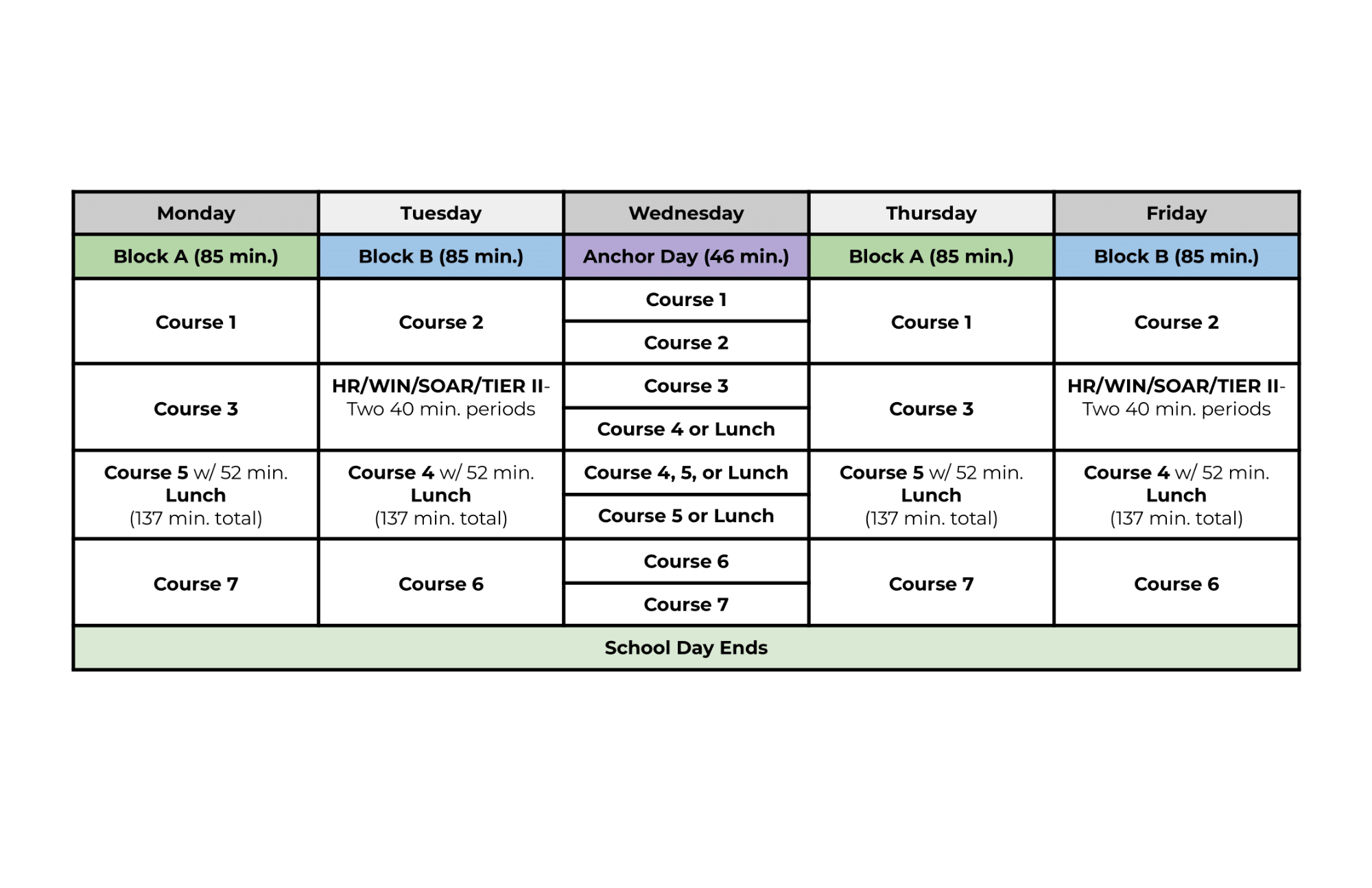Innovative School Experience
Page Navigation
High School
-
One of the key shifts recommend by the design team is a focus toward deep learning—moving beyond traditional, surface-level teaching practices to meaningful, student-centered learning experiences. This approach emphasizes inquiry-based, project-oriented, and collaborative work that allows students to apply their knowledge in real-world scenarios. Longer periods of time are essential for engaging in these types of complex and impactful learning activities.
Currently, students have large amounts of unstructured time during the school day due to transitions and transportation constraints. The design team seeks to reduce unstructured time by creating a more compact, efficient, and engaging school day, which we believe will also improve attendance and connection with school.
As interventions and social-emotional learning time have been added, class periods have grown shorter, making it harder to meet our instructional goals. Our goal is to maximize instructional time, organize it into larger chunks for deeper learning, and provide more time for individualized interventions and social-emotional support.
Finally, we recognize the importance of teacher collaboration. Currently limited to Wednesday morning late starts, this time is insufficient to meet the growing demands of interdisciplinary and collaborative teaching. The proposed schedule seeks to increase opportunities for teacher collaboration to support the high-quality learning experiences our students deserve.
Proposal
-
To meet the goals of our desired state, the high school design team recommends a block schedule model. This framework includes four block days and one anchor day in a typical five-day week.
On block days, each course is scheduled for 85 minutes of instruction, with the third block extended by 52 minutes to allow for lunch. Lunch periods can occur at the beginning, middle, or end of this block, and upperclassmen will retain their off-campus lunch privileges. Block days are organized into two clusters (A and B), maintaining the current number of courses while adding an additional two 40-minute periods for interventions or homeroom.
The anchor day, shown in the middle of the week, follows a traditional high school schedule with 46-minute periods, ensuring each course meets three times in a five-day week. In shortened weeks, the anchor day would be eliminated to balance the schedule.
It’s important to note that this is not the same block schedule used during pandemic learning.
This model doubles the time available for interventions and student support, reduces time spent in unstructured passing periods, and compacts the school day by 35 minutes, going from 7 hours and 25 minutes to 6 hours and 50 minutes. This adjustment allows students to get more sleep while giving faculty time to meet before school without needing a special schedule—truly a win-win for both students and staff.
While the student day is shorter, instructional minutes remain maximized. Teachers spend just as much time in instruction as they do now but benefit from longer blocks that reduce the need for tasks such as taking attendance, and opening and closing each class. The time used for these tasks has been converted into WIN and SOAR time which allows for more instruction in subjects where students may need additional support or the opportunity to extend learning. The flexibility to add time during the day in areas where students may need extension or support is a designed to address the feedback we received from students and staff, and is in alignment with our level belief statement. These longer blocks also enable deeper learning activities, allowing teachers and students to fully engage without interruptions or delays.


